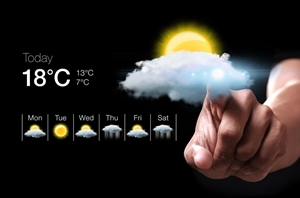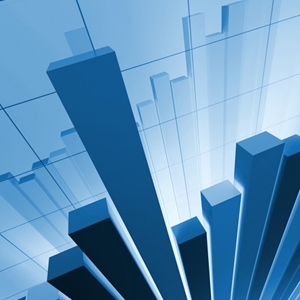
If you want to know what it will be like outside in a few hours, tomorrow or even a week from now, you probably turn to your local meteorologist, who leverages a variety of technologies and resources to provide a short- or long-range forecast.
Business forecasting works similarly. While the tools used may not be as high-tech, business forecasting enables entrepreneurs like you to obtain an educated prediction regarding the market economy of the foreseeable future. Establishing expectations can help you make decisions about how your company should function in terms of goal-setting and where to prioritise resources.
But just as there are different types of weather forecasts, there are different types of business forecasts as well. Which one you select – or even if it's all three – can inform how you approach certain aspects of your business, whether it's staffing, supply chain management, procurement, or several other tasks.
1. General Business Forecast
No matter what industry you're in, business activities never occur in a vacuum. There are numerous contributing factors that govern how you go about your day-to-day affairs, be it the political environment, consumer sentiment, local and national economies among a number of others. A general business forecast takes all of these factors into account to provide a high-level overview of future conditions.
Taking the totality of these considerations into account allows business owners to more effectively make informed decisions about how to proceed and what to do if things change. If you run a seasonal business, supply and demand may be assessed in league with local economic conditions of the moment. For instance, if unemployment is higher than expected and consumers have less discretionary incomes, this may impact what kind of traffic.
2. Sales Forecast
The forecast is self-explanatory – it's a projection of what purchase activity will be like over the next however many weeks, months or years. Of all the things that matter to a business' success, sales tops them all as it's ultimately what determines whether a company will succeed or fail.
Generally speaking, the best predictor of future behaviour is by looking to the past. This can be done by evaluating profit and loss statements, which can be used to generate line charts and bar graphs to identify if any patterns exist, like sales rising or falling from month to month. The more data you have available, the more detailed and precise a sales forecast can be when it comes to establishing expectations for profitability. A sales forecast may draw from a general business forecast, especially if economic conditions have changed markedly from last year.
3. Capital Forecast
It's often said that in order to make money, you must also have capital on hand to spend. A capital forecast evaluates what your needs are and what resources that you'll likely require to address those needs. It can provide insight into various aspects of your business so you can more effectively prepare for ongoing issues like depreciation, replacement, cash flow, turnover, development, reorganisation and the like. A capital forecast enables you to make the most of your available resources so you can maximise them and put them to their best use, thereby reducing waste.
Just as business forecasting provide different types of insight into what to expect, how these forecasts are conducted use different methods, or models. Two of the gold standards are quantitative and qualitative forecasting. Whereas the former is very matter-of-fact and objective, in that the focus is on data and what the numbers say or suggest, the latter is more nuanced and helps provide context to those numbers. For example, market research is a branch of qualitative forecasting. This method may draw from polls, surveys, questionnaires and feedback to identify whether a certain product or service is resonating with the public. These can be used to draw conclusions about sales expectations or what capital may be necessary to refine a product so it's more in line with what buyers actually want. Past performance, deductive method and indirect versus indirect are other branches of qualitative forecasting.
Quantitative forecasting is based almost entirely on numerical data. Here, profit and loss statements, revenue, cash flow and other figures are examined to identify whether any patterns or trends exist. A form of quantitative forecasting is called the index number methodology. This method uses data from two or more periods to identify if the economy is in expansion or contraction mode. Key clues into this assessment include investment activity, sales performance among large companies in large industries and hiring activity. These details offer clues into what overall economic conditions will look like moving forward, which can help with decision-making.
You may not have a crystal ball, but business forecasting serves as the next best thing. Contact WMC Accounting for these and many more solutions to building a better business.



